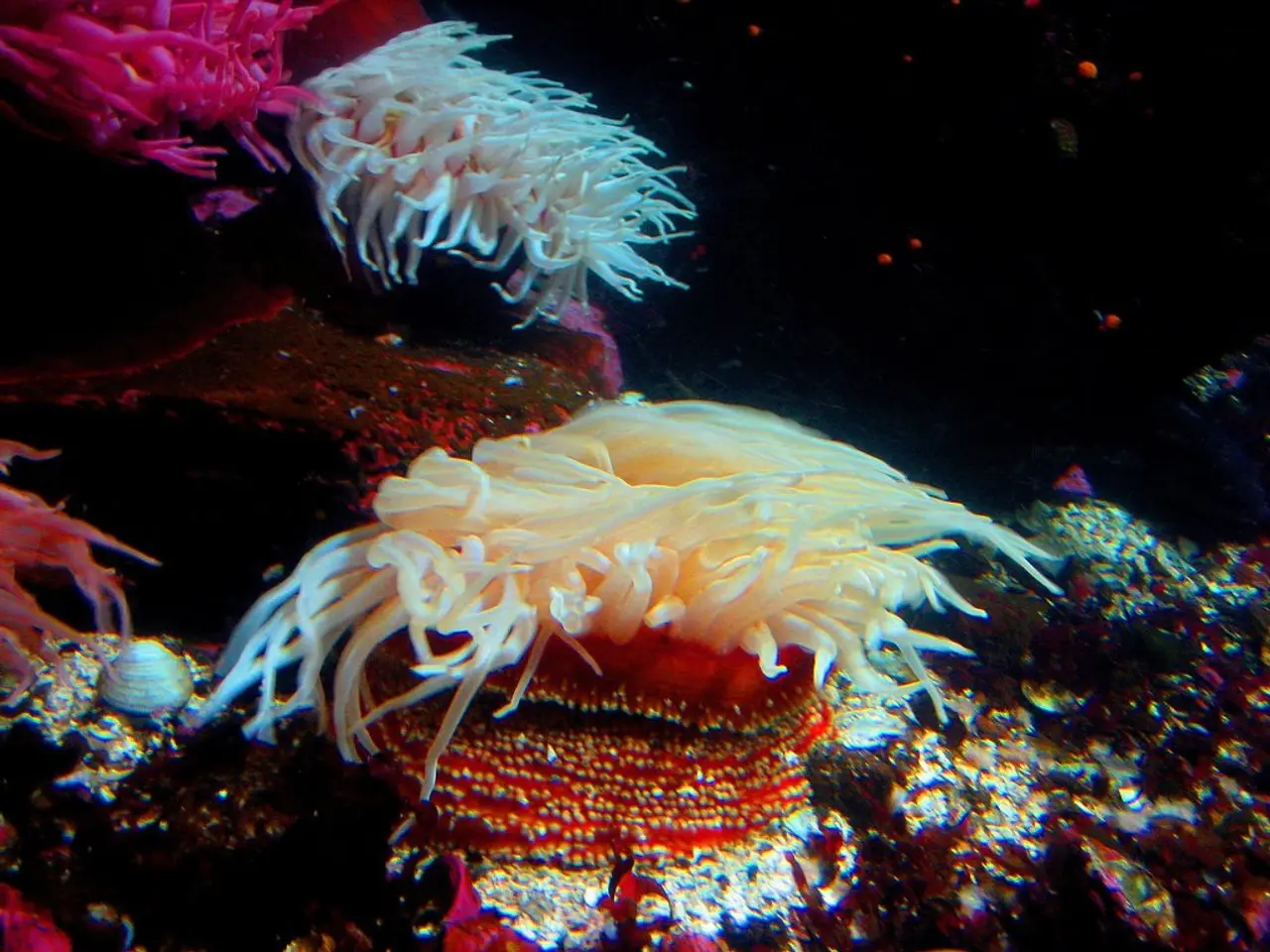Lab work on "super corals" and supplements: Unveiling the efforts to preserve the Great Barrier Reef
The Great Barrier Reef, the world's largest living structure, is facing a series of mass bleaching events in recent years, turning parts of the reef bright white. To combat this alarming trend, various initiatives are underway to discover and propagate "super corals" – corals with increased resilience to environmental stressors such as rising temperatures and ocean acidification.
One such project is the Coral Nurture Program, co-founded by Dr. Emma Camp. The program collaborates with local tourism operators and indigenous communities, aiming to replant corals at scale. With over 125,000 corals outplanted across the Great Barrier Reef, the program boasts an impressive survival rate of 85%.
The Coral Nurture Program is also exploring innovative solutions for coral restoration, such as feeding corals different food or vitamins to potentially increase heat tolerance. The goal is to develop a supplement that could give corals extra nutrients when stressed, helping them survive or recover from mass bleaching events.
Other labs around the world are following a similar path. For instance, the Australian Institute of Marine Science and the University of Newcastle are using genetic interventions to grow heat-tolerant corals with varying success between species.
Innovative techniques like Coral IVF (in vitro fertilization) and coral microfragmenting are being employed to boost the resilience of coral reefs. Developed by Southern Cross University, Coral IVF collects coral spawn during natural spawning events, rears the larvae in floating sea nurseries, and then releases millions of lab-grown larvae onto damaged reefs. The Australian Institute of Marine Science (AIMS) and Great Barrier Reef Foundation (GBRF) are applying the microfragmenting method widely across the Great Barrier Reef.
Research has also uncovered that some coral species have survival strategies that protect them under stressful conditions. For example, the coral species Acropora muricata upregulates adhesion proteins, effectively acting like a biological “super glue” to maintain toughness and growth despite internal erosion. This suggests potential targets for selecting or engineering super corals.
Community-science partnerships, such as those led by Titouan Bernicot's @coralgardeners, are actively involving scientists and local communities in planting super corals bred or selected for higher temperature resilience, supporting restoration on a grassroots level.
The University of Technology Sydney is also joining the search for super corals, experimenting with feeding corals microscopic brine shrimp and adding certain metals or vitamins to the water for potential nutritional benefits.
At the UN Ocean Conference this month, 11 countries signed a pledge to protect climate-resilient reefs, and separately, governments and partners pledged $25 million to a global fund for coral reefs. These commitments offer hope that the international community recognises the urgency of the situation and is prepared to invest in solutions.
Together, these efforts mark a multi-disciplinary push towards enhancing coral reef resilience by propagating super corals with improved survival, growth, and environmental tolerance, critical for combating coral bleaching events and reef decline in warming oceans.
- The Coral Nurture Program, in collaboration with local tourism operators and indigenous communities, is aiming to replant super corals at scale, with an impressive survival rate of 85%.
- The goal of some labs is to develop a supplement that could give corals extra nutrients when stressed, helping them survive or recover from mass bleaching events.
- Research has revealed that some coral species have survival strategies, such as upregulating adhesion proteins to maintain growth amidst erosion, potentially suggesting targets for selecting or engineering super corals.
- Community-science partnerships are actively planting super corals bred or selected for higher temperature resilience, supporting restoration on a grassroots level.
- At the UN Ocean Conference this month, 11 countries signed a pledge to protect climate-resilient reefs, and governments and partners pledged $25 million to a global fund for coral reefs, offering hope for international investment in solutions for combating coral bleaching events and reef decline in warming oceans.




